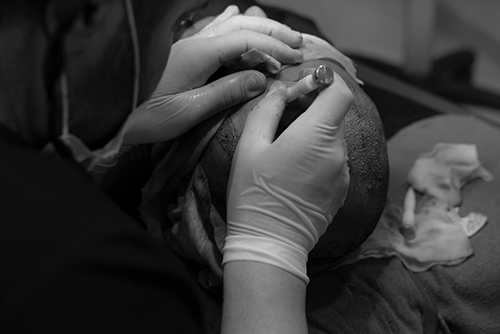History of the FUE Transplant Method

Hair transplants can be performed using a number of techniques, including FUT and FUE. FUT, or follicular unit transplantation, came earlier and was the go-to option for decades. This was until FUE, or follicular unit extraction, was invented. Since then, FUE has become the ideal option due to its numerous benefits.
Generally speaking, both methods are meant to accomplish the same goal. They both take hair from one area of the scalp that isn’t thinning and then transfer it to the balding spots. However, the way they do so is extremely different, which can be the deciding factor for a lot of patients.
If you’re considering a hair transplant, it’s best to make an informed decision. Read on to learn more about FUE and its history.
What Is FUE?
FUE is a hair-transplant method that involves extracting hair follicles and then transferring them to other areas on the patient’s scalp. This is done through the use of a special handheld tool with a thin nozzle. This tool is called a micro-punch.
A tiny incision is created around the follicular unit (each unit is one to four follicles). Forceps are then used to harvest it. Micro-incisions are created in the transplant area, and the follicles are then transplanted into the incisions.
It’s a delicate and laborious process, but when performed correctly by experienced and competent doctors, the result is nearly indistinguishable from natural hair coverage. This is true for both male and female patients. The procedure does not create visible scarring.
FUE Through the Years
The FUE method of hair transplantation officially came onto to the scene back in 2003. It was during this time that it was made possible to collect follicular units one at a time for extraction and insertion.
Since the inception of the FUE method, it has become more and more popular as a way to return the luscious locks of patients all over the world. The results achieved through this cosmetic solution have only become more indistinguishable from natural hair.
A lot of this has to do with the refinement of the tools used—specifically, the design of the micro-punch tool for extraction and transfer. Technique and experience also played a pivotal role in making the process not only faster but also safer and more convenient.
FUE Today
These days, it can almost be impossible to detect a head of hair that went through the FUE procedure without closer examination. It’s now considered the most advanced method of hair transplantation and has only become more so with NeoGraft FUE, which involves semi-automatic technology for advanced precision and efficiency.
Several different techniques that use FUE as a base exist today, with many doctors developing their own approach. Because of this, it’s important for patients to look over examples of their work to determine which doctor they prefer.
Want to Learn More About FUE?
More details about FUE’s history, application, and various techniques can be learned when patients contact us to set up a consultation. Get in touch today to get started.









